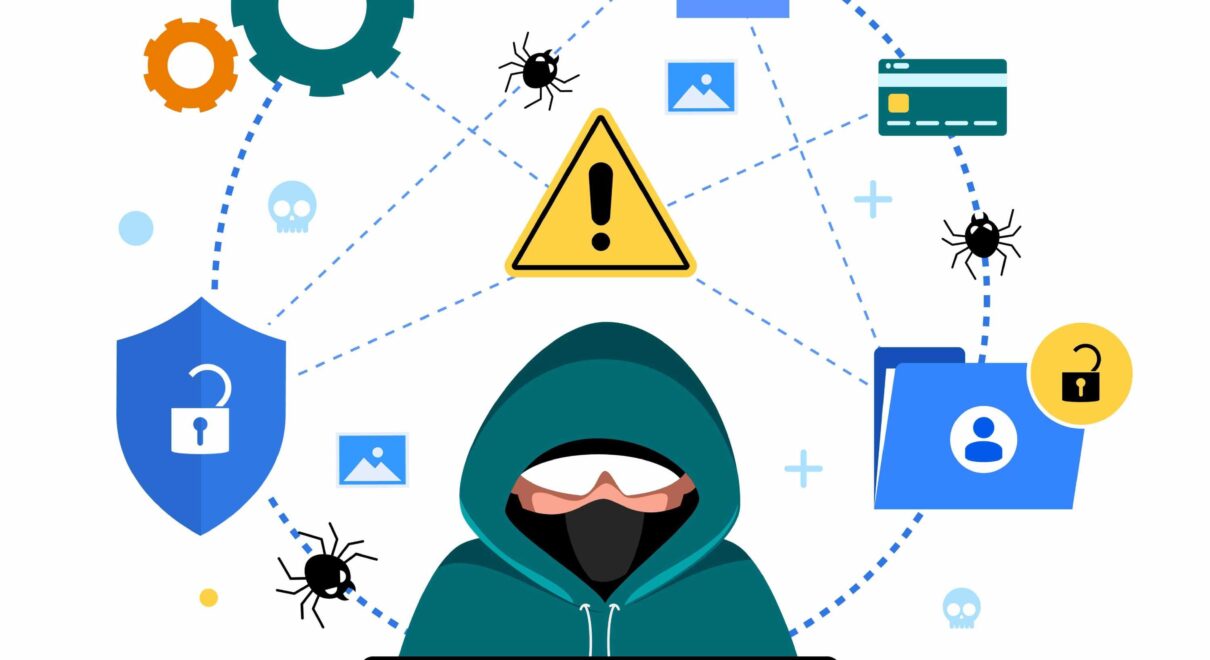Best cybersecurity practices are crucial in today’s increasingly digital landscape, where technology plays a pivotal role in our daily lives. Small businesses and individuals alike are prime targets for cyber threats, making it imperative to implement effective security measures. This comprehensive guide aims to equip you with the knowledge and tools necessary to bolster your cybersecurity defenses.
Bolstering Security: Implementing the Best Cybersecurity Practices for Your Digital Protection
1. Password Management: Creating a Strong Foundation
One of the fundamental pillars of cybersecurity is effective password management. Creating strong, unique passwords is the first line of defense against unauthorized access. Use a combination of uppercase and lowercase letters, numbers, and symbols. Additionally, consider employing a reputable password manager to generate and store complex passwords securely.
2. Two-Factor Authentication (2FA): Adding an Extra Layer of Security
Two-factor authentication (2FA) is a crucial component of a robust cybersecurity strategy. By requiring users to provide two forms of identification before granting access, 2FA significantly enhances security. Explore the various methods of implementing 2FA for your accounts, such as text messages, authenticator apps, or hardware tokens.
3. Phishing Awareness: Recognizing and Avoiding Threats
Phishing attacks remain a prevalent threat, often targeting individuals and businesses through deceptive emails, messages, or websites. Develop a keen awareness of phishing tactics, including scrutinizing email sender details, avoiding suspicious links, and verifying the legitimacy of requests for sensitive information.
4. Device Security: Safeguarding Your Digital Assets
Securing your devices is paramount in the fight against cyber threats. Regularly update your operating system and applications to patch vulnerabilities. Install reputable antivirus software to detect and remove malware. Be cautious when connecting to public Wi-Fi networks, as they can pose security risks.
5. Data Backup Strategies: Guarding Against Data Loss
Data loss can occur due to various reasons, including cyberattacks, hardware failures, or accidental deletions. Implement a robust data backup strategy to safeguard your important files. Regularly back up data to an external drive or a secure cloud service to ensure quick recovery in case of an incident.
6. Safe Online Shopping and Banking: Ensuring Secure Transactions
Online transactions involve sensitive information, making them potential targets for cybercriminals. Ensure the security of your online shopping and banking activities by using secure websites (look for “https://” in the URL), avoiding public Wi-Fi for financial transactions, and regularly monitoring your accounts for any unauthorized activity.
7. Employee Training (for Small Businesses): Building a Cyber-Aware Culture
For small businesses, the human element is a critical aspect of cybersecurity. Train your employees on cybersecurity best practices, emphasizing the importance of secure password management, recognizing phishing attempts, and adhering to company security policies. Foster a culture of cyber awareness to mitigate potential risks.
8. Security Software Recommendations: Choosing the Right Tools
Selecting the right security software is crucial for comprehensive protection. Explore reputable antivirus programs, anti-malware tools, and firewalls to create a multi-layered defense against cyber threats. Regularly update these tools to ensure they are equipped to handle evolving security challenges.
9. Incident Response Plan: Preparing for the Unexpected
Despite robust preventive measures, incidents may still occur. Develop a comprehensive incident response plan outlining the steps to take in the event of a security breach. This plan should include procedures for containment, eradication, recovery, and communication to minimize the impact on your business or personal data.
10. Regular Security Audits: Proactively Assessing Vulnerabilities
Regular security audits are essential for proactively identifying and addressing potential vulnerabilities. Conduct thorough reviews of your online presence, including social media accounts, and assess your network security. Identify and rectify any weaknesses to stay one step ahead of potential threats.
Strategic Implementation of Best Cybersecurity Practices: Safeguarding Digital Frontiers with Problems and Solutions
Password Management: The Sentinel of Digital Fortresses
Problem: Weak or reused passwords jeopardize security.
Solution:
- Advocate for robust, unique passwords.
- Promote reputable password managers.
- Instill the habit of regular password updates.
Two-Factor Authentication (2FA): Reinforcing the Shield
Problem: Relying solely on passwords exposes vulnerabilities.
Solution:
- Promote 2FA adoption for an extra layer of security.
- Provide guidance on varied 2FA methods.
- Highlight 2FA’s effectiveness in compromised password scenarios.
Phishing Awareness: Detecting and Neutralizing Threats
Problem: Phishing attacks compromise sensitive information.
Solution:
- Conduct regular phishing awareness training.
- Stress the importance of scrutinizing sender details.
- Establish a reporting system for timely responses.
Device Security: Fortifying the Digital Arsenal
Problem: Unprotected devices invite malware and cyber threats.
Solution:
- Emphasize regular software updates.
- Advocate for reputable antivirus software.
- Promote caution on public Wi-Fi and VPN usage.
Data Backup Strategies: Safeguarding Against Irreversible Loss
Problem: Data loss threatens due to cyberattacks or accidents.
Solution:
- Establish a robust data backup strategy.
- Educate on the importance of automated backups.
- Conduct periodic data recovery drills.
Safe Online Shopping and Banking: Ensuring Financial Transaction Security
Problem: Online transactions are vulnerable to interception.
Solution:
- Instruct secure website transactions.
- Advise against public Wi-Fi financial transactions.
- Promote regular monitoring of financial statements.
Employee Training (for Small Businesses): Nurturing a Cyber-Aware Culture
Problem: Uninformed employees pose risks.
Solution:
- Conduct regular cybersecurity training.
- Establish clear security policies.
- Foster a culture of responsibility and prompt reporting.
Security Software Recommendations: Choosing the Right Tools
Problem: Inadequate tools expose systems to threats.
Solution:
- Recommend reputable antivirus tools.
- Emphasize regular tool updates.
- Encourage comprehensive security suite exploration.
Incident Response Plan: Readying for the Unexpected
Problem: Lack of a structured response plan exacerbates incidents.
Solution:
- Develop a comprehensive incident response plan.
- Conduct regular response drills.
- Establish clear communication channels during incidents.
Regular Security Audits: Proactively Identifying Weaknesses
Problem: Irregular security assessments lead to overlooked vulnerabilities.
Solution:
- Conduct routine security audits.
- Assess online presence and network security.
- Implement proactive measures based on audit findings.
In conclusion, adopting the best cybersecurity practices is not a choice but a necessity in our interconnected world. By proactively addressing these challenges with the suggested solutions, individuals and businesses can significantly fortify their digital defenses. This holistic approach ensures a secure digital environment, safeguarding valuable data and ensuring peace of mind amid evolving cyber threats. Stay informed, stay vigilant, and stay secure with the best cybersecurity practices.



